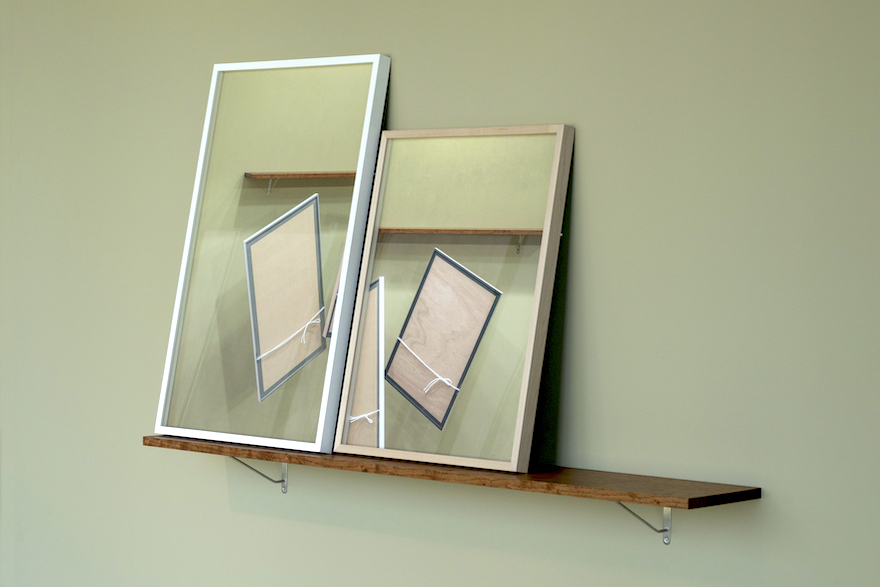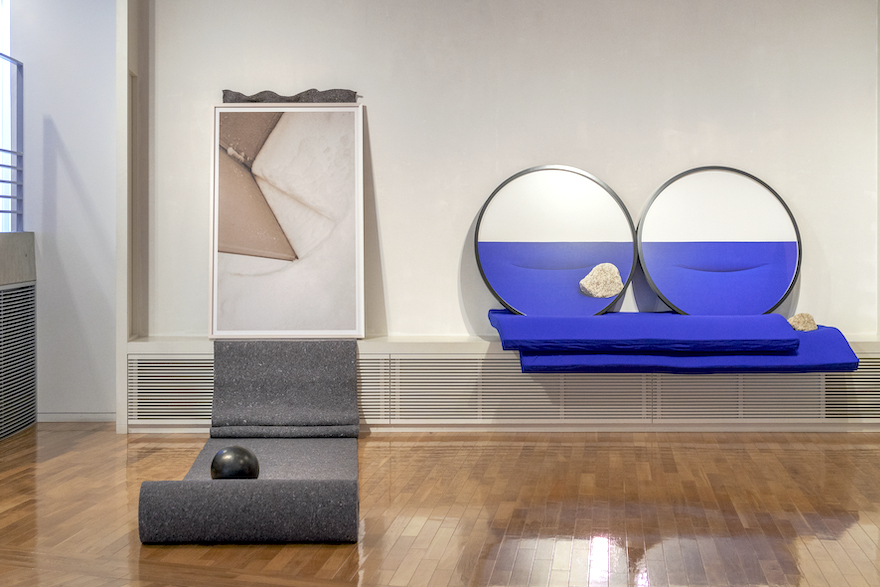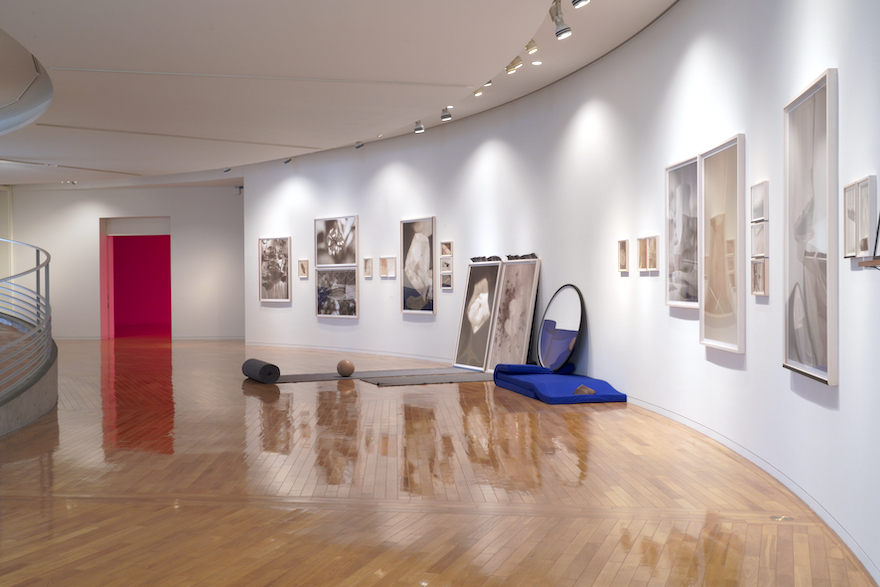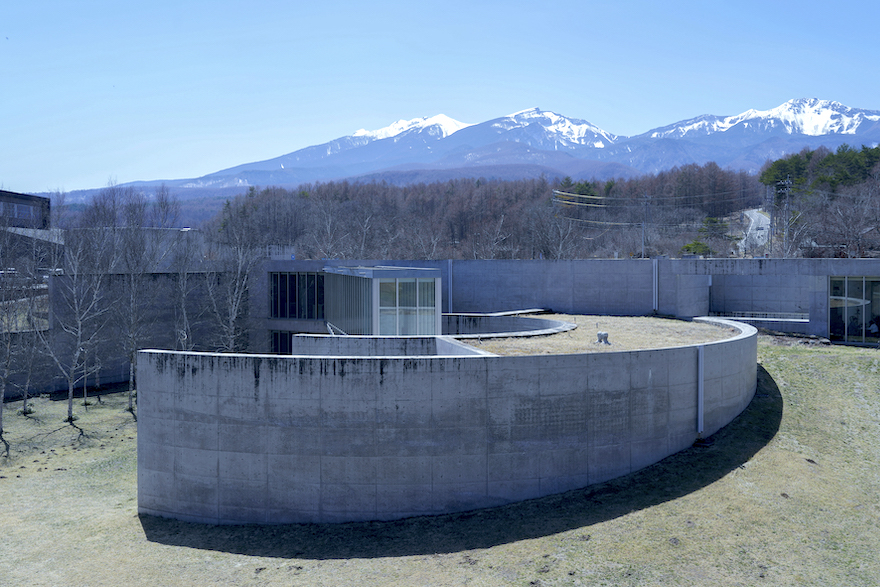Cultural Currency 1: Hirofumi Isoya “Find Your Verb”
Subverting the “here and now” – The collages of Isoya Hirofumi
By Shimizu Minoru
2022.05.22

Realkyoto Forum is excited to announce the launch of a thought-provoking new series of opinion pieces by critic Shimizu Minoru, focusing on cultural events of our time. Look out for this (mainly) monthly dose of cutting-edge cultural critique. (Editorial Department)
① What are the fragmentary rectangles (cubes) that pervade the picture planes?
② Why are there no colors in Analytical Cubism and why is umber so pervasive?”1
③ “Why did they have to make sculptures and reliefs that look as if actual objects have literally been taken apart and put together again?”2 If we equate Analytical Cubism with folding the three-dimensional visual experience into a two-dimensional plane, then Analytical Cubist works are Hans Hofmann-like “facet-planes,” ie, forms photographed from multiple angles, rendered multi-layered. Thus, we can consider Analytical Cubist picture planes as medleys of multiple projection surfaces (layers). Because from the age of the camera obscura the default for projection surfaces (layers) has been the rectangle, Analytical Cubist picture planes are naturally pervaded by rectangles (→①). At this time, the three-dimensional visual experience was converted into the perspective device called the photograph (the basis of which was then black and white), and in terms of the units comprising the picture plane, the projection surface from each viewpoint was limited to lines and light and shadow. Because the unevenness of space due to color values inevitably distorts these units, it is possible that they were excluded for the time being as separate variables(→②). The architectural historian Colin Rowe identified in such medleys of layers the two modes of “literal transparency” and “phenomenal transparency.” The former is a condition in which the hierarchical relationship of the overlapping layers is known and the picture plane as a whole appears as a collection of transparent layers (“photographic space”). As for the latter, because the hierarchical relationship of the layers is thrown into confusion and mutually conflicting groups of layers exist simultaneously, transparency as multilayeredness is derived. Here, collage functions not as the reduction of things to the basal surfaces of layers, but as a process that disturbs the hierarchical relationship of layers. As William Rubin points out, constructions were not by-products of collages, but matrixes that preceded and gave rise to collages.3 It is possible that they were introduced as an opportunity to take collages from “literal transparency” to their original goal of “phenomenal transparency”(→③). Collage is essentially an endless process of repeating the operation of adding extraneous material leading to the appearance of basal surfaces (layers) and of continually renewing them, or in other words continually betraying the preceding basal surfaces. Thus, not only space but also time – in the form of its interrupted linear flow – is folded into collage. If we use the term “frames” instead of “layers,” collage is no longer dependent on dimension. Abstract sculpture as 3D collage involves combining various fragments in an attempt to generate new frames that transcend the mere sum total of the fragments themselves, but in this case, the process of renewing the frames is taken on by the audience moving around the work. As well, if we interpret “frame” as a frame of film, it is clear that the experimental films from this same period are directly related to collage. Indeed, Hans Richter’s Rhythmus 21 (1921) is a work in which the frames are simply continually renewed. However, in both cases, to the extent that the temporality of collage is expressed in parallel with physical linearity (the movement of the audience, the screening of a film), to borrow Rowe’s terminology, we probably should say that they are “literal” collages of time. On the other hand, in Marcel Duchamp’s Nude Descending a Staircase, No. 2 (1912), which was inspired by the chronophotography of Étienne-Jules Marey and Eadweard Muybridge, movement divided into multiple frames is folded into a single picture plane. Perhaps Duchamp was seeking to overcome the “literal”-ness of sculpture and film, but in the actual work, the separated frames overlap while gracefully slipping from top left to bottom right like a sequence of photographs, and it is difficult to call the result a “phenomenal” collage of time (the coexistence of mutually conflicting time).

 For a start, because all manner of layers, including picture planes, floors, walls, water, mirrors, focal planes and surfaces on which shadows fall, are inverted, one can hardly sense gravity at all in Isoya’s spatial collage works. If 20th-century collage “analyzed” objects in the real world, the subject of 21st-century collage is the world of images. By way of installations, images that float intangibly are connected to the reality of the “here and now.” The placement of the works on the floor, the recycled felt sheets and the ceramic balls each perform the roles of “top/bottom,” “substratum (on wall or floor)” and rest point under gravity. But if anything, these performances shake one’s sense of direction in the “here and now.”
For a start, because all manner of layers, including picture planes, floors, walls, water, mirrors, focal planes and surfaces on which shadows fall, are inverted, one can hardly sense gravity at all in Isoya’s spatial collage works. If 20th-century collage “analyzed” objects in the real world, the subject of 21st-century collage is the world of images. By way of installations, images that float intangibly are connected to the reality of the “here and now.” The placement of the works on the floor, the recycled felt sheets and the ceramic balls each perform the roles of “top/bottom,” “substratum (on wall or floor)” and rest point under gravity. But if anything, these performances shake one’s sense of direction in the “here and now.”
 Added to these is temporal collage. In the temporal collage photographs in the photographic installation, the future state of the present installation is depicted. However, because the scene before one’s eyes and the depicted future state are shot from different angles, the differences in time and differences in space combine to tear apart the “here and now.” In the “Lag” series, because the falling photographs within the photographs are photographs before one’s eyes, the future and the present endlessly recur like an infinity mirror, the “here and now” swallowed up within it. Isoya’s works are variants of the power of collage to subvert the stable position of the “here and now.” They were a nice contrast to Ando Tadao’s architecture, which is reduced to exposed concrete and glass, or in other words architecture that converges on the pure “here and now.”
Added to these is temporal collage. In the temporal collage photographs in the photographic installation, the future state of the present installation is depicted. However, because the scene before one’s eyes and the depicted future state are shot from different angles, the differences in time and differences in space combine to tear apart the “here and now.” In the “Lag” series, because the falling photographs within the photographs are photographs before one’s eyes, the future and the present endlessly recur like an infinity mirror, the “here and now” swallowed up within it. Isoya’s works are variants of the power of collage to subvert the stable position of the “here and now.” They were a nice contrast to Ando Tadao’s architecture, which is reduced to exposed concrete and glass, or in other words architecture that converges on the pure “here and now.”
 ——————————–
——————————–
1 Okazaki Kenjiro, Abstract Art as Impact (Tokyo: Akishobo, 2018), p. 12.
2 Ibid.
3 William Rubin, Picasso and Braque. Pioneering Cubism (New York: The Museum of Modern Art, 1989), 35. See also, Komoto Mari, Setsudan no jidai: 20 seiki ni okeru korāju no bigaku to rekishi [The age of scisson: Aesthetics and history of collage in the 20th century] (Tokyo: Brucke, 2007), p. 142. Shimizu Minoru
Critic. Professor, Doshisha University.
*Hirofumi Isoya “Find Your Verb” is being held at the Koumi-machi Kougen Museum of Art through June 19, 2022.
Koumi-machi Kougen Museum of Art
https://www.koumi-museum.com/ Isoya Hirofumi
https://www.whoisisoya.com/
*
Three questions concerning Analytical Cubist painting:① What are the fragmentary rectangles (cubes) that pervade the picture planes?
② Why are there no colors in Analytical Cubism and why is umber so pervasive?”1
③ “Why did they have to make sculptures and reliefs that look as if actual objects have literally been taken apart and put together again?”2 If we equate Analytical Cubism with folding the three-dimensional visual experience into a two-dimensional plane, then Analytical Cubist works are Hans Hofmann-like “facet-planes,” ie, forms photographed from multiple angles, rendered multi-layered. Thus, we can consider Analytical Cubist picture planes as medleys of multiple projection surfaces (layers). Because from the age of the camera obscura the default for projection surfaces (layers) has been the rectangle, Analytical Cubist picture planes are naturally pervaded by rectangles (→①). At this time, the three-dimensional visual experience was converted into the perspective device called the photograph (the basis of which was then black and white), and in terms of the units comprising the picture plane, the projection surface from each viewpoint was limited to lines and light and shadow. Because the unevenness of space due to color values inevitably distorts these units, it is possible that they were excluded for the time being as separate variables(→②). The architectural historian Colin Rowe identified in such medleys of layers the two modes of “literal transparency” and “phenomenal transparency.” The former is a condition in which the hierarchical relationship of the overlapping layers is known and the picture plane as a whole appears as a collection of transparent layers (“photographic space”). As for the latter, because the hierarchical relationship of the layers is thrown into confusion and mutually conflicting groups of layers exist simultaneously, transparency as multilayeredness is derived. Here, collage functions not as the reduction of things to the basal surfaces of layers, but as a process that disturbs the hierarchical relationship of layers. As William Rubin points out, constructions were not by-products of collages, but matrixes that preceded and gave rise to collages.3 It is possible that they were introduced as an opportunity to take collages from “literal transparency” to their original goal of “phenomenal transparency”(→③). Collage is essentially an endless process of repeating the operation of adding extraneous material leading to the appearance of basal surfaces (layers) and of continually renewing them, or in other words continually betraying the preceding basal surfaces. Thus, not only space but also time – in the form of its interrupted linear flow – is folded into collage. If we use the term “frames” instead of “layers,” collage is no longer dependent on dimension. Abstract sculpture as 3D collage involves combining various fragments in an attempt to generate new frames that transcend the mere sum total of the fragments themselves, but in this case, the process of renewing the frames is taken on by the audience moving around the work. As well, if we interpret “frame” as a frame of film, it is clear that the experimental films from this same period are directly related to collage. Indeed, Hans Richter’s Rhythmus 21 (1921) is a work in which the frames are simply continually renewed. However, in both cases, to the extent that the temporality of collage is expressed in parallel with physical linearity (the movement of the audience, the screening of a film), to borrow Rowe’s terminology, we probably should say that they are “literal” collages of time. On the other hand, in Marcel Duchamp’s Nude Descending a Staircase, No. 2 (1912), which was inspired by the chronophotography of Étienne-Jules Marey and Eadweard Muybridge, movement divided into multiple frames is folded into a single picture plane. Perhaps Duchamp was seeking to overcome the “literal”-ness of sculpture and film, but in the actual work, the separated frames overlap while gracefully slipping from top left to bottom right like a sequence of photographs, and it is difficult to call the result a “phenomenal” collage of time (the coexistence of mutually conflicting time).
*
And so a collage is both a collage of space and a collage of time, and the layers/frames that comprise it do not conform to a uniform order. With a refined hand, Isoya Hirofumi revives collage in the 21st century as the coexistence of mutually conflicting space-times. This essence is clearly and richly developed in this, the artist’s first retrospective exhibition.
Lag 10, 2018

Left, foreground: Activation 04, 2022; left, background: Arc, 2014-2019; right: Parallax Gesture, 2016

Installation View: Gallery 3

Koumi-machi Kougen Museum of Art, Architect: Ando Tadao
1 Okazaki Kenjiro, Abstract Art as Impact (Tokyo: Akishobo, 2018), p. 12.
2 Ibid.
3 William Rubin, Picasso and Braque. Pioneering Cubism (New York: The Museum of Modern Art, 1989), 35. See also, Komoto Mari, Setsudan no jidai: 20 seiki ni okeru korāju no bigaku to rekishi [The age of scisson: Aesthetics and history of collage in the 20th century] (Tokyo: Brucke, 2007), p. 142. Shimizu Minoru
Critic. Professor, Doshisha University.
*Hirofumi Isoya “Find Your Verb” is being held at the Koumi-machi Kougen Museum of Art through June 19, 2022.
Koumi-machi Kougen Museum of Art
https://www.koumi-museum.com/ Isoya Hirofumi
https://www.whoisisoya.com/